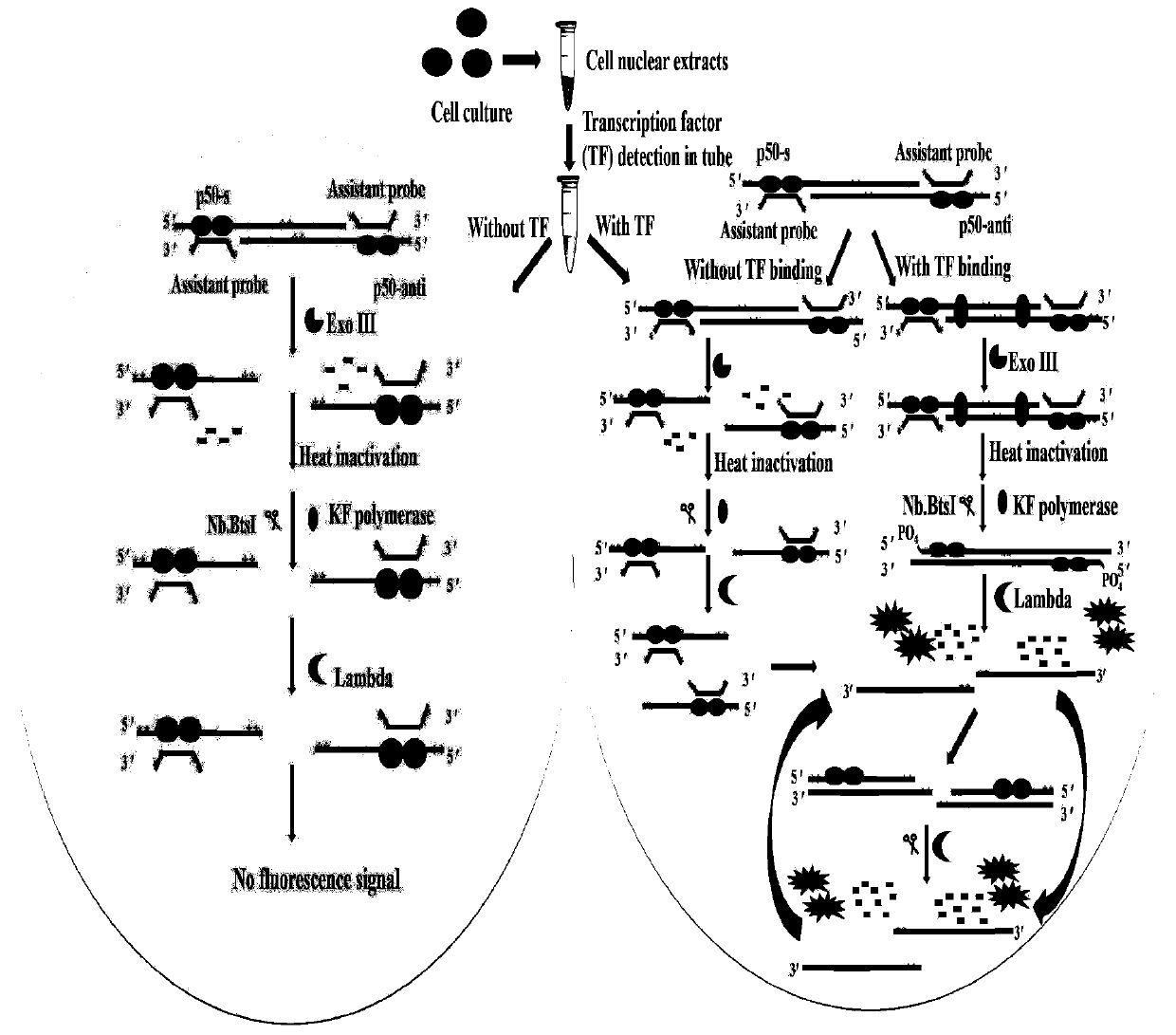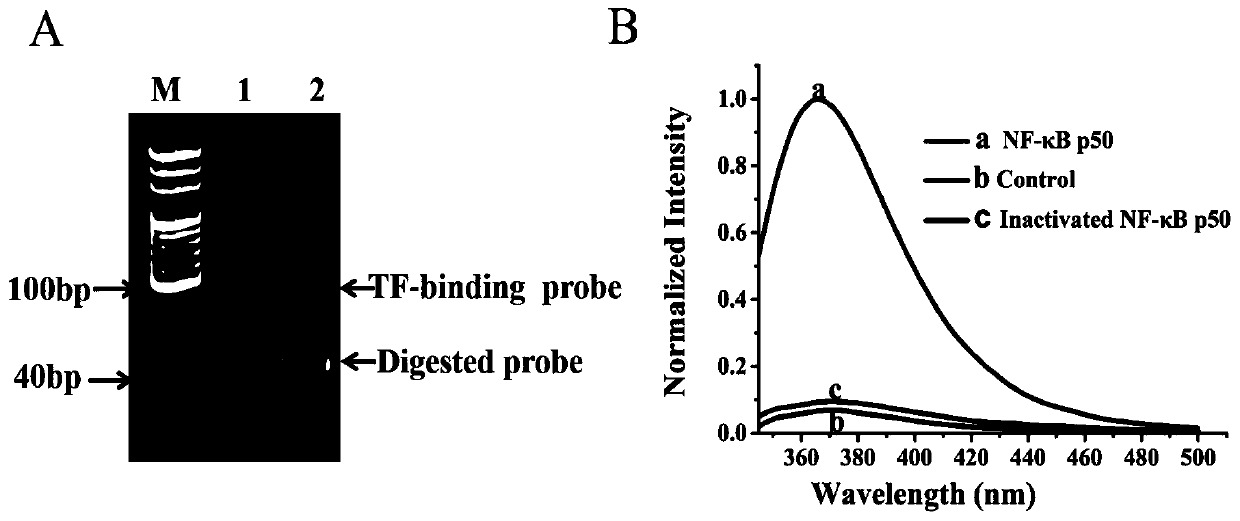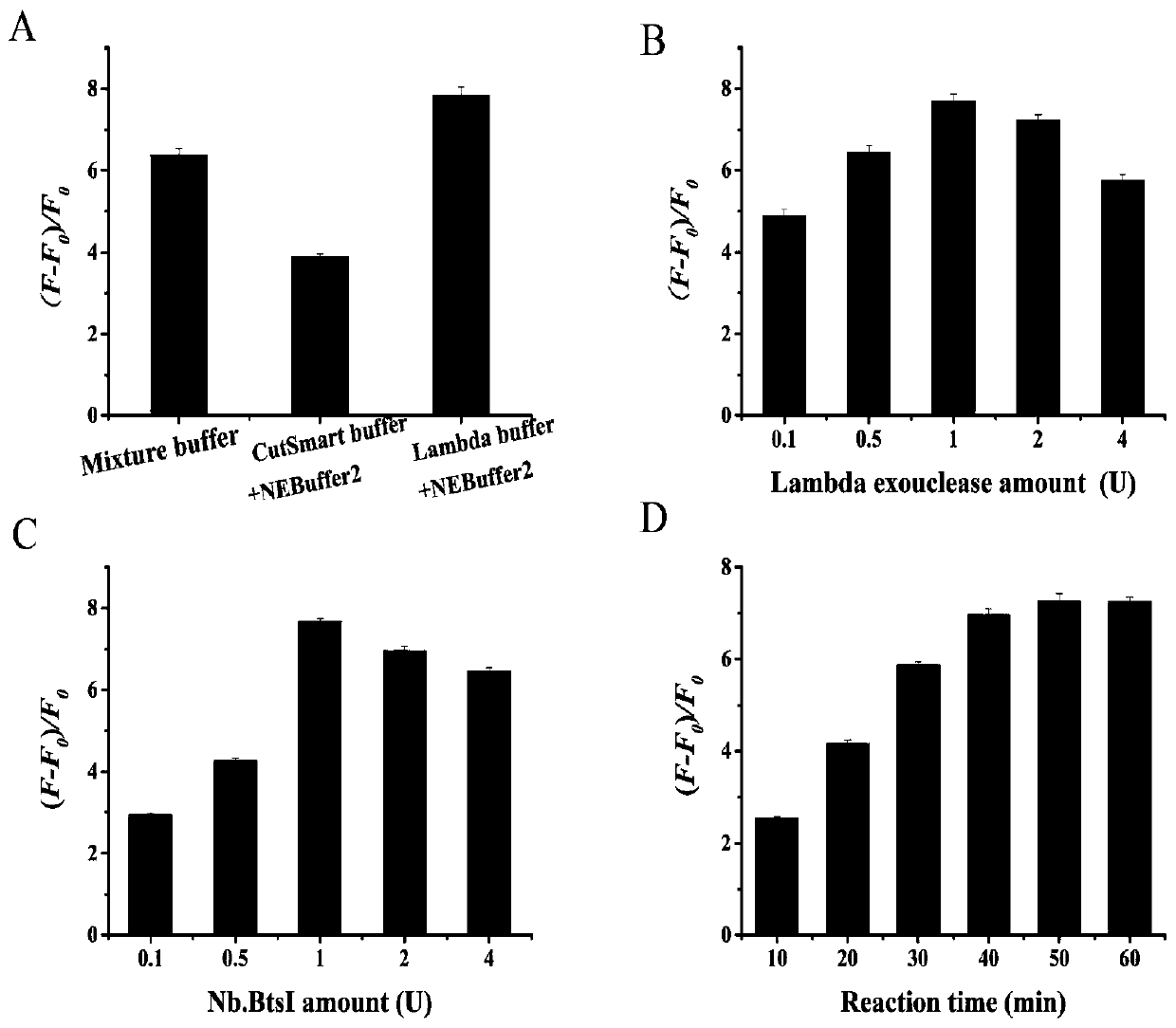A fluorescent chemical sensor for detecting transcription factor NF-κBP50 and its detection method
A chemical sensor and transcription factor technology, applied in the field of biological analysis, can solve problems such as complex reaction principles, and achieve the effects of reducing non-specific reactions, simple operation, and accurate and reliable experimental results.
- Summary
- Abstract
- Description
- Claims
- Application Information
AI Technical Summary
Problems solved by technology
Method used
Image
Examples
Embodiment
[0067] Experimental method steps
[0068] 1. Cell Culture and Preparation of Nuclear Extracts
[0069] Hela cells (human cervical cancer cell line) were cultured in DMEM medium containing 10% fetal bovine serum and 1% penicillin and streptomycin in an incubator containing 5% carbon dioxide at 37°C. Add 20 ng / mL tumor necrosis factor (TNF-α) to stimulate Hela cells, and incubate in the incubator for 30 min. Cell extracts were extracted using a nuclear extraction kit (ActiveMotif) according to the instructions. Protein concentration was quantified by Bradford method. Cell extracts were finally frozen and stored in minus 80°C refrigerator for later use.
[0070] 2. Protein-DNA Interaction and Exonuclease III Digestion
[0071] First prepare the double-stranded probe detection, 10 micromol per liter of p50-s probe, 10 micromol per liter of p50 anti-probe and 20 micromol per liter of auxiliary probe in 10 mmol per liter of Tris-HCl, 100 mM Moles per liter of sodium chloride, p...
PUM
 Login to View More
Login to View More Abstract
Description
Claims
Application Information
 Login to View More
Login to View More - Generate Ideas
- Intellectual Property
- Life Sciences
- Materials
- Tech Scout
- Unparalleled Data Quality
- Higher Quality Content
- 60% Fewer Hallucinations
Browse by: Latest US Patents, China's latest patents, Technical Efficacy Thesaurus, Application Domain, Technology Topic, Popular Technical Reports.
© 2025 PatSnap. All rights reserved.Legal|Privacy policy|Modern Slavery Act Transparency Statement|Sitemap|About US| Contact US: help@patsnap.com



